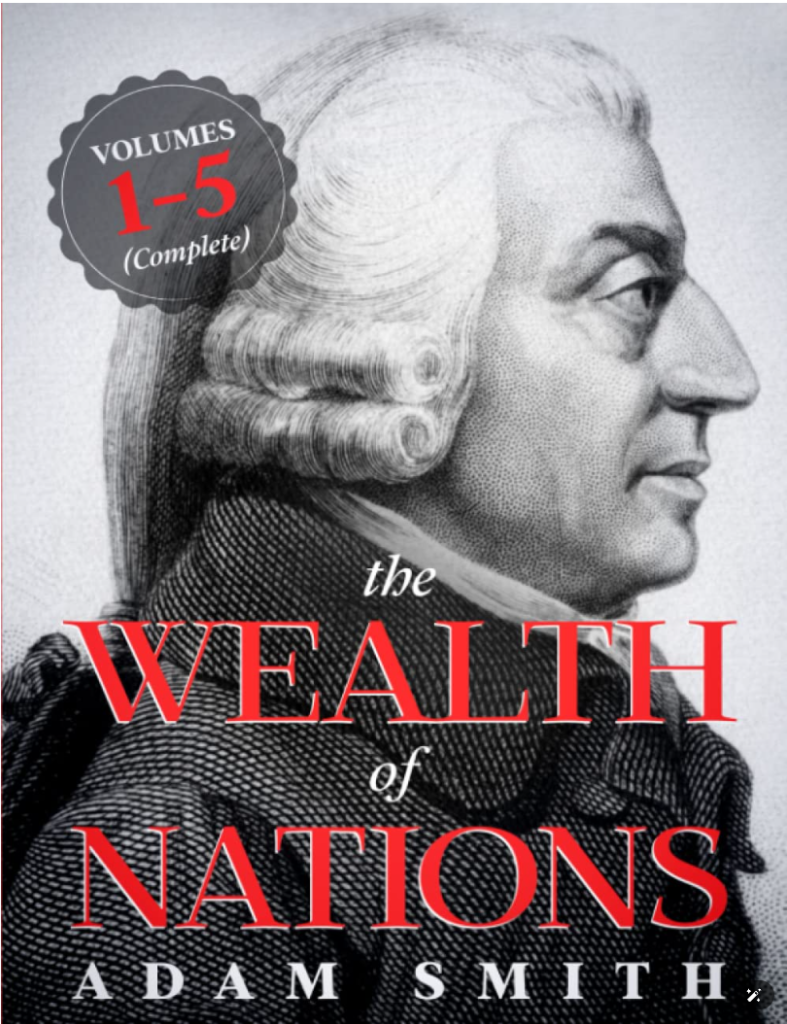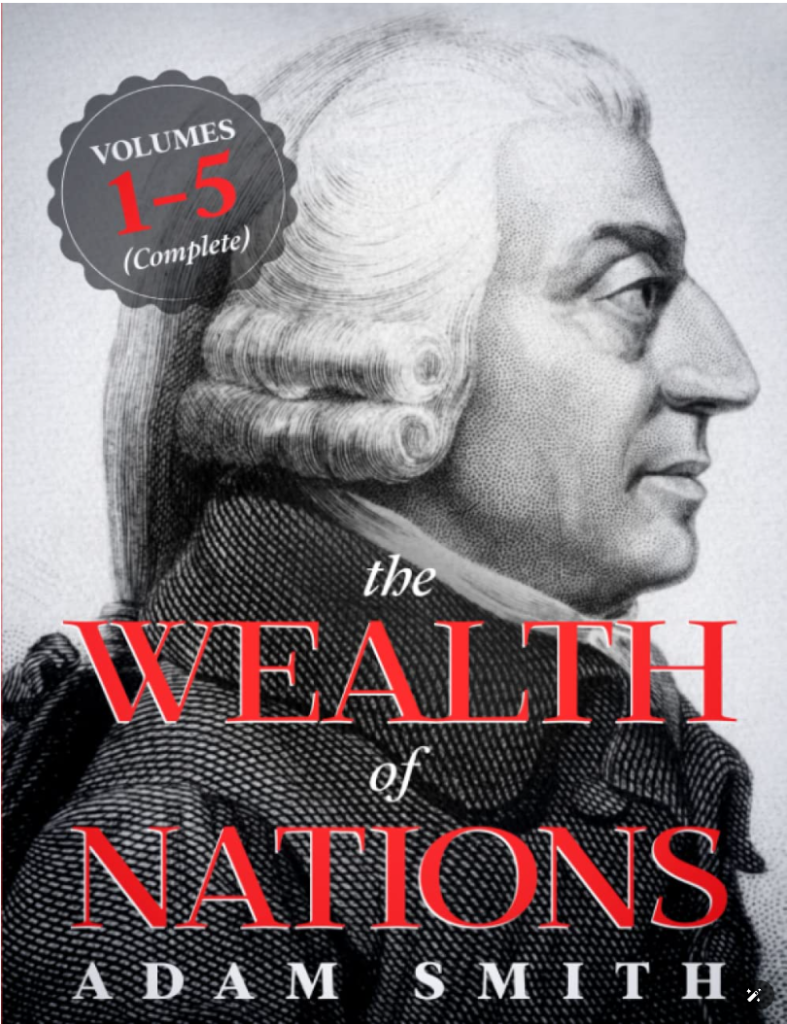A Masterpiece of Economic Analysis
Adam Smith is a key figure in economics, often recognized as the father of capitalism. His influential work, “The Wealth of Nations,” published in 1776, presents ideas that still hold relevance today. Smith emphasized the importance of incentives, suggesting that understanding human behavior and self-interest is essential in developing effective economic policies. This foundational perspective has shaped modern economic thinking.
In exploring Smith’s principles, you will discover how productivity drives prosperity, the role of money in facilitating trade, and the various factors that contribute to pricing. These concepts are crucial for grasping how economies function and evolve, influencing how wealth is created and distributed in society.

Adam Smith: Pioneer of Economic Thought
Adam Smith was a notable Scottish economist and philosopher. His influential book, The Wealth of Nations, published in 1776, created a significant impact on economic theory. Many regard him as “the father of economics” or “the father of capitalism” for valid reasons, emphasizing the importance of incentives in economic policies.
Key Takeaways from The Wealth of Nations:
- Productivity is Essential:
A nation’s wealth increases when jobs become more productive. Higher employment rates and enhanced job efficiency can lead to better provision of goods and services.- Thousands of years ago, everyone worked to gather food, yet today, even those with the least resources are often richer than historical royalty.
- A story illustrates this: an inspector saw many people digging a waterway while machines stood unused. The manager feared unemployment if machines were used. The inspector humorously suggested using spoons instead of spades to illustrate that productivity comes first.
- Skill: Better techniques and abilities in performing tasks.
- Efficiency: Reducing time spent switching tasks.
- Machinery Use: Employing tools effectively aids productivity.
- Understanding Money:
As labor divides, individuals produce less of what they personally need and rely more on exchanges. Early trading was inefficient until the concept of money emerged, allowing for smoother transactions.- Metals became money due to their durability and divisibility.
- Money’s value stems from trust that it can be exchanged for necessary goods later.
- Components of Price:
The price of goods consists of:- Wages: Payment for labor involved.
- Profit: Return for the capital invested.
- Rent: Costs tied to land usage.
The Wealth of Nations: Relying on Incentives
Adam Smith laid out important ideas in his work, The Wealth of Nations. He emphasized that we must trust in incentives because people naturally act in their self-interest. When creating economic policies, it is vital to consider these behaviors. To enhance a society’s wealth, it is crucial to establish the right incentives that encourage people to act positively.
Key Takeaways
- Productivity is Essential
A nation’s wealth increases when more people are employed or when existing workers become more productive. Historically, even the poorest individuals today have more wealth than past kings. For instance, a story highlights a situation where many laborers worked without using available machines. This example shows that productivity is key to enhancing wealth. - What is Money?
Money serves as a facilitator for exchanging goods and services. In early times, trading was inefficient because supplies and demands didn’t match. The introduction of money simplified these exchanges. It creates trust among people, encouraging them to trade their goods for money, which they believe can later be exchanged for what they need. - Understanding Price Components
Price consists of three main parts: wages, profits, and rent. The real cost of an item reflects the labor required to produce it. On the other hand, nominal price is what people measure in money. This distinction helps you understand the factors influencing prices in different contexts.
Factors Improving Productivity
To improve productivity, consider the following:
- Skill Level: Enhancing worker skills can lead to better outputs.
- Efficient Task Management: Reducing wasted time when switching tasks can boost productivity.
- Use of Machinery: Properly utilizing machines can increase output dramatically.
The Role of Trust in Money
People rely on money knowing it can be traded for goods later. Trust plays a vital role in economic transactions. Without it, the system would fail. The importance of trust extends beyond just currency; it is the backbone of all economic activities.
By focusing on these principles, you can better understand how economies grow and the essential role incentives play in shaping human behavior.
Productivity: The Heart of Prosperity
Job Increase and Productivity
You will find that a nation’s wealth grows when more people have jobs. This can happen in two ways: first, more jobs become available, and second, people get better at their work. The focus should be on increasing productivity rather than just increasing job numbers. Interestingly, even those with low incomes in modern society often have greater wealth than kings from ancient times.
Productivity Factors
Three main factors boost productivity:
- Skill Level: Being skilled in specific tasks.
- Minimizing Downtime: Reducing the time lost when switching tasks.
- Effective Machinery Use: Using machines to enhance work efficiency.
Each person should focus on what they do best, allowing for better trades within society.
Division of Labor and Market Expansion
The more you specialize in tasks, the greater the productivity. This specialization is linked to a larger market. In bigger cities, like New York, you have access to a wider variety of products and services than in smaller towns. Improved transportation, such as boats, allows fewer workers to move more goods, thus encouraging market expansion and labor division.
Transportation’s Impact on Trade and Productivity
Transportation plays a critical role in trade and productivity. For example, a small team can move as much freight by boat as a much larger group can with wagons and horses. Areas close to rivers and coastlines typically develop faster because they have better trade opportunities. Efficient transport leads to a larger labor division, enhancing overall productivity across the market.
Money: The Medium of Exchange
The Inefficiency of Barter
Long ago, trading goods directly, known as barter, was common. This system had many problems. For example, if you made a spear but needed salt, the person with salt might not want a spear at that moment. This made trading difficult. It required finding the right person who wanted what you had and had what you wanted. As a result, many trades couldn’t happen, leading to wasted time and resources.
Introduction of Money as Solution
Money emerged to solve the issues of barter. By creating a standard way to exchange value, money made trade easier. Instead of needing to find someone who needed a spear, you could sell it for money and then buy salt or anything else you needed. This greatly improved the efficiency of exchange and allowed people to focus on producing goods instead of just trading directly.
The Qualities of Metals as Money
Metals became a common form of money for good reasons. They are durable, meaning they don’t spoil or wear out easily. Metals can also be divided into smaller units and recombined, which helps in making exact payments. These qualities made metals a reliable choice for trade, providing a sense of value that paper money does not inherently have.
Value in Use Versus Value in Exchange
Items have different types of value. For example, a spear has value in use because it can be used for hunting. However, its value may not work well in trade. On the other hand, money itself, like coins or bills, has value in exchange but not in use. You cannot eat money or use it as a tool. The important thing is that people must trust that money can be traded later for what they need.
The Foundation of Money: Trust
Trust is essential for money to work. You trust that a dollar bill will get you something valuable later. This trust allows people to accept money in exchange for their goods. Without trust, money wouldn’t serve its purpose. As Warren Buffett noted, it’s not just about believing in a higher power, but about having faith in the systems that support our money, like central banks.
Price Components and Economic Value
Labor: The Real Cost
The true cost of anything often lies in the labor that goes into producing it. When you think about a product’s value, consider how much time and energy it requires to create. For instance, a task that takes more effort usually has a higher real cost compared to one that is easier to complete. In a marketplace, this means that people weigh their offers based on the labor involved in creating goods.
Nominal Price Versus Real Price
You may often hear about nominal price, which refers to the cost of an item in money terms. However, it’s important to differentiate this from the real price, which reflects the amount of labor invested. It’s tough to directly compare labor value, so society adopts money to gauge real prices. This way, you can make quick exchanges without always estimating the labor input for each item.
Wage, Profit, and Rent
The price of goods can be broken down into three main parts: wages, profits, and rents.
- Wages: This pays the workers who produce goods.
- Profit: This compensates those who invest capital into business operations.
- Rent: This is the cost for using land where production or exchange occurs.
These components can vary widely. For example, wages can differ significantly between jobs like a cashier and a doctor. Profits may change by industry but tend to even out over time. Rent can vary dramatically based on location, with urban areas often costing more than rural ones. Understanding these parts helps you see how prices are formed in the economy.
Socioeconomic Impact
Differences in Wages and Profits
Wages and profits can vary widely across different jobs and industries. For example, a cashier at McDonald’s earns significantly less than a neurosurgeon. This difference highlights how professions demand different skills and responsibilities, which in turn affects what people are paid.
Profits also vary, but not as drastically as wages. Industries may see different profit margins, which tend to average out over time. This means that while some sectors make more money than others, the overall profit landscape remains more balanced.
The Variability of Rents
Rents can differ greatly depending on location. For instance, land in New York can cost around $5,200,000 per acre, while in a small town like Eksjö in Sweden, it might only be $20,000 per acre. This stark contrast in land costs directly impacts the rental prices that can be charged.
In general, higher land prices lead to higher potential rent. This means that the composition of costs for products and services can vary significantly based on where they are sold.
For more book about Business & Money click here
Lern more about THE PSYCHOLOGY OF MONEY (Morgan Housel)

Leave a Reply